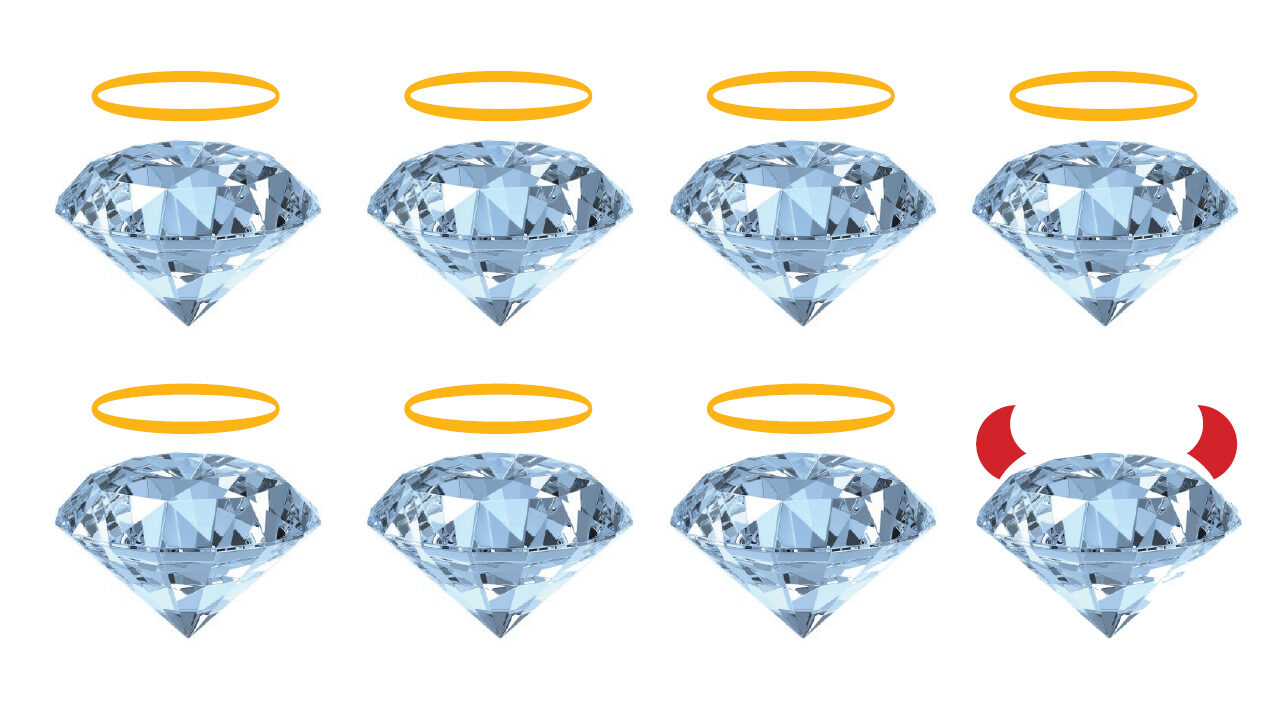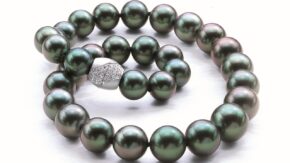Machines are the go-to method for rooting out lab-created stones nowadays, but with so many devices on the market, how do traders choose?
If a dealer is caught supplying laboratory-grown diamonds labeled as natural, it can do serious damage to his or her business. For that reason, the ability to sift out synthetics from a batch of stones is critical for the industry. This has opened a market for devices that can identify fakes so people know exactly what they’re buying or selling.
Still, the landscape is far from easy for traders. Part of the problem is the mere chemical reality. Synthetic diamonds are real diamonds, from a gemologist’s perspective. They are identical to natural ones in terms of their chemical composition and are therefore impossible to distinguish with the naked eye, even for an expert using a loupe.
As only technology can do the job, the industry of synthetic-screening machines has sprouted. They largely work by detecting features that suggest a diamond took barely a month to grow in a lab, as opposed to billions of years underground.
This is the case for identifying diamonds from both main growing methods: High Pressure-High Temperature (HPHT) and chemical vapor deposition (CVD). During the HPHT process, high pressure generated inside a machine causes powder made from real diamond to dissolve in molten metal and crystallize inside a capsule, forming a synthetic diamond crystal.
With CVD, manufacturers break down molecules of carbon-containing gas, with the resultant carbon atoms turning into crystal over several weeks.
Sometimes a single instrument is not necessarily capable of delivering foolproof results.
Sutariya Vipul, president, DRC Techno
The different growth patterns between HPHT, CVD and natural diamonds help scientists to separate them. Even so, these methods of checking for synthetics are not perfect. On their own, many common characteristics of lab-grown gems are nothing more than strong indications that a stone didn’t come from the earth. For this reason, the GIA recommends using as many diagnostic criteria as possible when trying to pick out fakes.
A case in point was the GIA’s discovery last year of an undisclosed synthetic cushion-cut, 5.19-carat, J color, VS2-clarity diamond that had been submitted for testing at its Hong Kong lab. It was the largest CVD diamond the GIA had ever examined and might easily have been missed – it did not contain black inclusions, a common feature of synthetics, so it could have passed as natural had examiners carried out their test with just a microscope.
More advanced techniques showed that the stone gave off light under ultraviolet radiation, a known trait of CVD diamonds. While the GIA has labs at its disposal, the average trader has to make do with what is available in a regular office and cannot feasibly send every stone to a gemologist for scrutiny.
Yet the market for purchasable synthetics detectors is not so simple from the buyer’s point of view. The list of products is long and the machines’ capabilities diverse. Some only pick out HPHT, some only CVD, and a few are only for melee.
Crucially, some contraptions screen automatically, while others require the user to look at a display and manually remove suspect stones that the machine highlights.
Devices also differ in terms of what types of items they can scan — loose diamonds or jewelry, polished or rough — and which shapes. Their ease of use is also variable, as is their price.
Around 16 machines exist on the market, produced by at least five different companies, with purchase prices ranging from just under $4,000 to $350,000, according to research by DRC Techno, which itself makes at least three different gadgets.
“Everyone says their machine’s better,” says DRC Techno president Sutariya Vipul. “Sometimes a single instrument is not necessarily capable of delivering foolproof results. In some cases, the client may require two or more instruments to reach a conclusion.”
To combat this challenge, the Diamond Producers Association (DPA), which markets diamonds to consumers on behalf of the major mining companies, is planning to open a lab where it will assess all the available devices and publish its results to the trade. It hopes to have a committee in place to run the project by March.
“The program responds to an obvious need that all in the trade recognize,” says Jean-Marc Lieberherr, chief executive officer of the DPA.
The facility’s opening means traders “can make an informed choice about what is best for their business.”
That might go at least some way toward helping traders through the minefield of synthetic diamonds.
Some Tell-Tale Signs to Look for
HPHT
FEATURE: Uneven color distribution, or zoning, under transmitted light.
REASON: Impurities such as nitrogen enter the synthetic crystal when it forms. Natural diamonds can also show zoning, but not in such a geometric pattern.
FEATURE: Inclusions of solidified metal, appearing black and opaque in transmitted light, with a metallic luster in reflected light. Diamonds with larger metal inclusions can even be picked up with a magnet.
REASON : The flux metal alloy used for growing diamonds usually contains substances such as iron, nickel or cobalt.
CVD
FEATURE: Diamond has a series of ridges, or striations, going across its surface.
REASON : The effect results from the layer-by layer nature of CVD growth.
FEATURE: Defects resulting from “vacancies” are detectable using spectroscopic methods such as photoluminescence, ultraviolet
illumination and optical absorption.
REASON : The CVD process takes place in a hydrogen-rich environment. This can result in the diamond crystal missing carbon atoms in certain places. If a carbon vacancy is next to a silicon or nitrogen atom, it can cause a “silicon-vacancy center” or a “nitrogen vacancy center.”
As these are rare in nature, the presence of such a vacancy is a sign the diamond could be synthetic.




